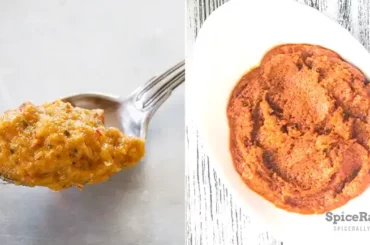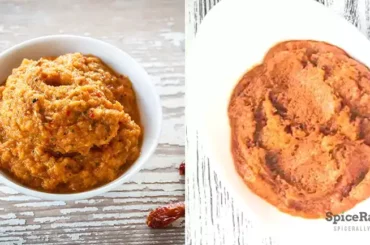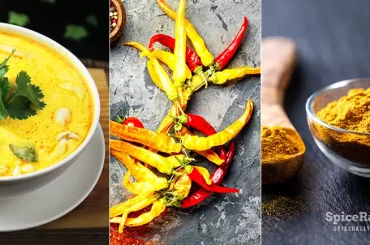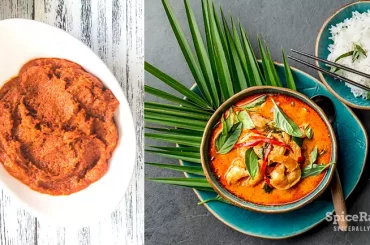Would you believe it if somebody said all curry pastes are the same? Actually, you shouldn’t trust them because there are significant differences between them. So, in this article, we will be discussing the facts about Thai red curry paste vs yellow curry paste.
The most apparent difference between Thai red curry paste and yellow curry paste are their colors. In addition, the red curry paste is hotter due to its red chili based flavor. Conversely, yellow curry paste is mild with a subtle “curry” flavor thanks to its turmeric and curry powder/spice base. Both are used in a medley of dishes but they have unique uses in cooking too.
On that note, to learn more about Thai red curry paste vs yellow curry paste, we invite you to read the rest of the article.
Thai Red Curry Paste Vs Yellow Curry Paste- Difference Explained
Why would Thai cuisine have come up with different curry pastes if they all were the same- did you ever think about that? In fact, each of these curry pastes has different purposes when it comes to cooking.

Starting from the colors to the uses, there are a few differences between the Thai red curry paste and yellow curry paste that requires your attention.
Hence, for further clarification, refer to the table below, which has shown you clearly about Thai red curry paste vs yellow curry paste.
| Thai Red Curry Paste | Thai Yellow Curry Paste | |
|---|---|---|
| Base Flavor | Red chilies | Turmeric and curry powder/ spices |
| Types of chilies used | Red chilies | Dried red/yellow chilies (in small amounts) |
| Other Ingredients | Garlic Galangal/ ginger Ground coriander seeds Ground cumin seeds White pepper/black pepper Lemongrass Coriander root (cilantro root) Shrimp paste Salt Fish sauce/ soy sauce (in some recipes) Shallots kaffir lime peel | Turmeric Curry powder Ground coriander Ground cumin Garlic Galangal/ginger White pepper/black pepper Lemongrass Salt Kaffir lime peel/kaffir lime leaves Shrimp paste Shallots Fenugreek seeds Cardamom Mace Cinnamon Cloves |
| Flavor Profile | Hot, spicy, and warm with tart, salty flavor notes | Mildly hot and warm with a robust “curry” flavor |
| Color | Reddish-orange | Golden-yellow |
| Level of spiciness | Spicier than the yellow curry paste | Less spicy than the red curry paste |
| Availability | – It can be purchased from the store or put together at home – Readily available in grocery stores, leading supermarkets, and online shopping sites. | – Can be made at home and bought from the store. – Easily available in leading supermarkets, grocery stores and with online sellers |
| Forms of availability | Comes as a paste in containers of different shapes and sizes. | Comes in the form of a paste in containers of different sizes and shapes. |
| Uses | – With ground meat mixtures – To be mixed in stir-fries – In rice, noodle, pasta, and spaghetti – In eggs – With sauces, dips, and dressings – In curries – In fusion dishes – With meat, fish and seafood dishes – As a flavor booster in marinades – With soups and stews – With vegetables – To be incorporated in sandwich spreads | – Great with coconut milk-based curries – As a base in soups and stews – To mix with savory batters – To be incorporated in marinades – With stir-fries – In wrap fillings – With vegetables – In fusion cooking – With rice, noodles, pasta, and spaghetti |
Wrapping Up…
So, if you observed the table above carefully, you could have caught the subtle differences between these two curry pastes. In fact, Thai red curry paste is way hotter than yellow curry paste. In addition, they are different in colors, and usage in cooking has slight variations.




